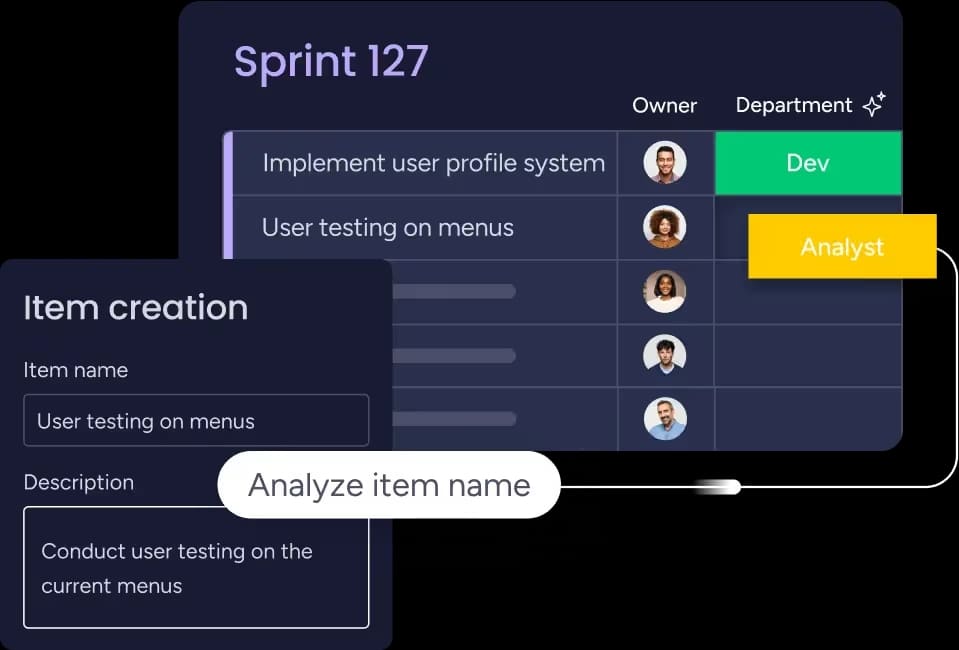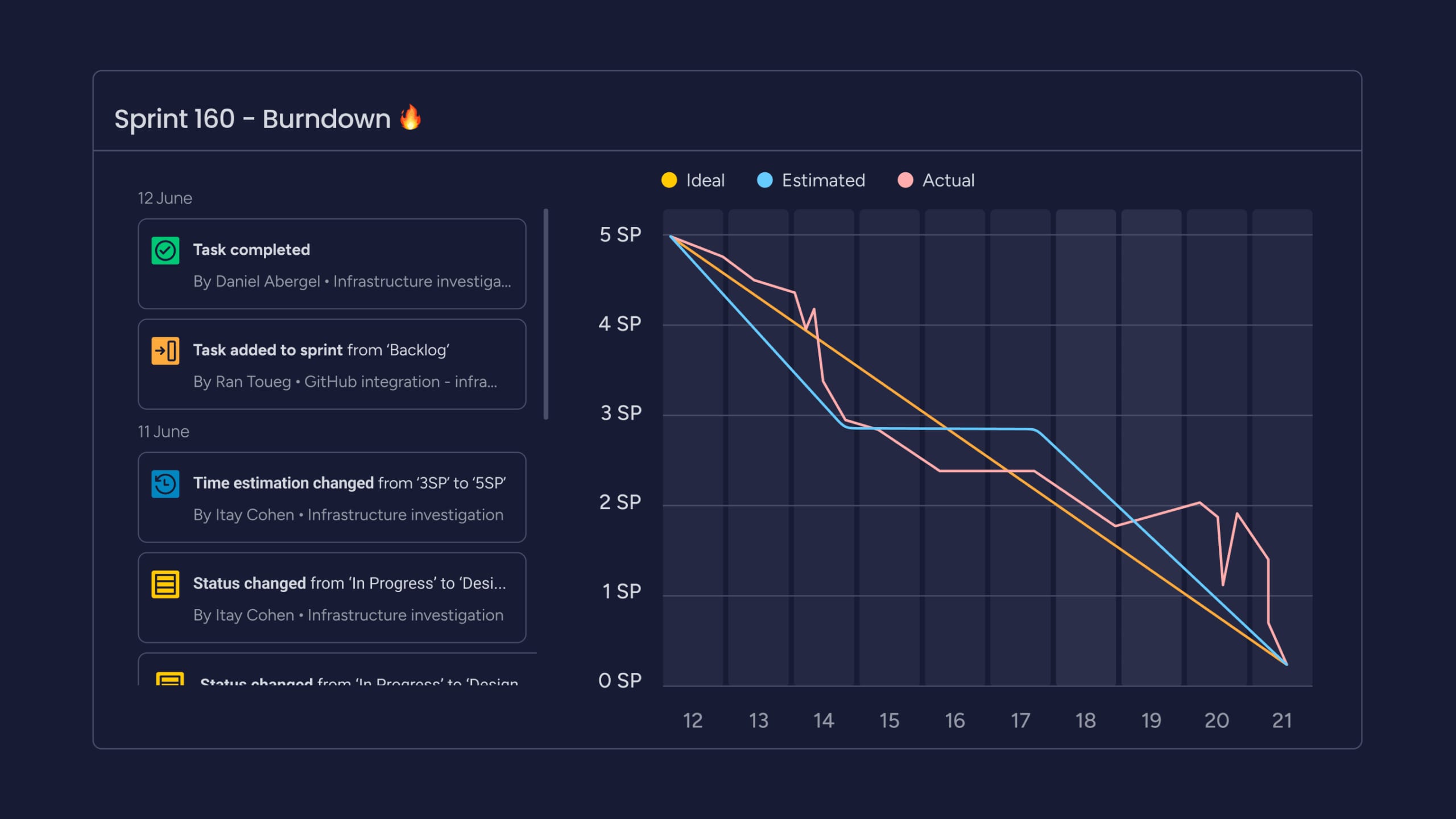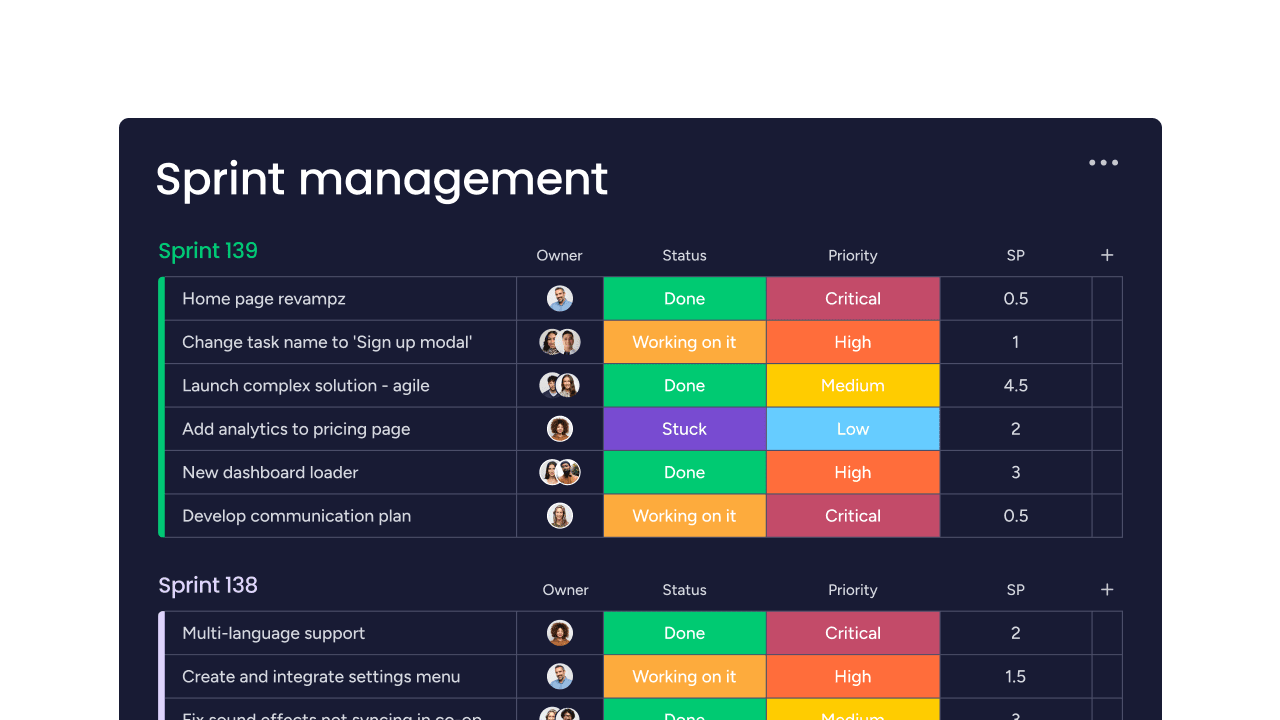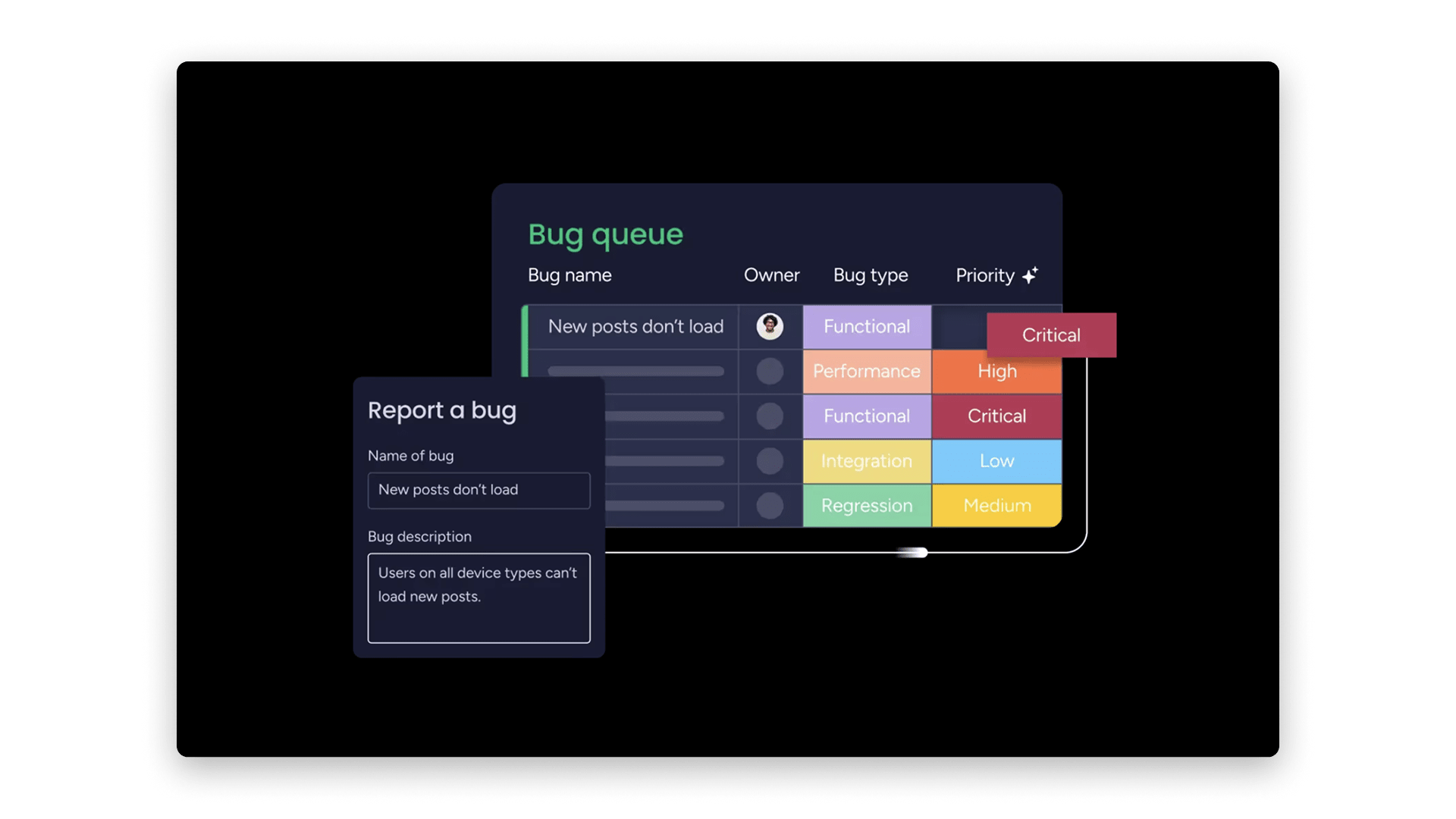For years, software development often meant building in layers. Teams would construct the entire database, then all the backend logic, and finally the user interface. The problem is that nothing is usable until every piece is finished, which can take months.
This approach delays feedback, concentrates risk at the final integration stage, and creates a long gap between development work and real user value.
A different approach flips this model entirely. Instead of building horizontally by layer, successful teams now build vertically by feature. A vertical slice is a complete piece of functionality that cuts through every layer of an application, from the interface down to the database. This method allows you to deliver a small but fully working feature that provides immediate value and can be tested by users right away.
This guide explores the principles of vertical slicing, from its core benefits like faster feedback loops to its impact on team structure and architecture. It also details how to implement this approach, integrate it with Agile practices, and overcome common challenges to make your development process faster and more aligned.
Key takeaways
- Deliver real value fast: build complete end-to-end features that customers can use and test immediately instead of waiting for full system layers.
- Break down silos: enable designers, developers, and QA to collaborate on the same feature at the same time, reducing handoffs and delays.
- Improve feedback loops: ship small, testable slices in 1–4 weeks and refine based on real customer behavior rather than assumptions.
- Reduce project risk early: surface integration issues, usability problems, and technical blockers while they’re still small and easy to fix.
- Coordinate slices with monday dev: manage feature delivery, capacity, and progress in one workspace so cross-functional teams stay aligned without extra meetings.
What is vertical slicing?
A vertical slice is a complete piece of functionality that cuts through every layer of your application — from the user interface all the way down to the database. This means you build one feature completely before moving to the next one, an approach that can lead to development cycle times being reduced by roughly 40 percent.
It’s helpful to use the analogy of making a sandwich. Instead of laying out all the bread first, then all the meat, then all the cheese, you make one complete sandwich at a time (and each sandwich is ready to eat right away).
How vertical slices work in practice
Vertical slices turn feature development into something customers can actually use right away. Instead of waiting for separate teams to finish different layers, each slice includes everything needed for a complete user workflow — the interface, the logic, and the data behind it.
When you build this way, you deliver working functionality early in the process. Customers can try it, share feedback, and shape what comes next. Teams don’t need to imagine how a feature will behave later — they can interact with it now.
This approach also changes how teams collaborate. Designers, developers, QA, and product work together on the same slice from start to finish. Because everyone is contributing to one complete feature, there’s no waiting for another group to “hand off” their part. It creates faster decisions, clearer context, and less rework overall.
Key characteristics of a vertical slice
What defines a true vertical slice? To be successful and deliver immediate value, every slice needs these essential characteristics:
- Complete functionality: every piece works together from start to finish.
- Cross-functional delivery: all team members contribute to one feature together.
- User-focused outcome: real people can use it and give feedback right away.
- Iterative approach: you can improve based on what you learn.
Vertical slices across industries
Software teams pioneered vertical slicing, but now it’s everywhere. Game developers create playable demos, which often act as a proof of concept in early stages of production. Product managers prioritize features this way. Even enterprise teams use it for complex projects.
The key is adapting the approach to your specific needs while keeping the focus on delivering complete, working pieces.

Vertical slice vs horizontal slice
Vertical and horizontal slicing take opposite approaches to structuring development work. One delivers complete features that customers can use right away, while the other builds technical layers that only come together at the end.
What is horizontal slicing?
Horizontal slicing means building your application layer by layer. First you build all the databases. Then all the APIs. Finally, all the user interfaces.
It’s like building a house by installing all the plumbing first, then all the electrical, then all the walls. You can’t live in it until everything is done.
5 key differences explained
| Aspect | Vertical slice | Horizontal slice |
|---|---|---|
| Focus | Complete features | System layers |
| Delivery | User-ready functionality | Technical components |
| Structure | Cross-functional | Specialized by layer |
| Feedback timing | Early and frequent | Later in development |
| Risk management | Distributed across features | Concentrated in integration |
How to choose the right approach
When should you use vertical slicing? It works best when you need early feedback, when requirements might change, or when stakeholders need to see regular progress.
Horizontal slicing might work for pure infrastructure projects or when requirements are completely locked down. But even then, you can often find ways to deliver complete workflows instead of isolated components.
Benefits of vertical slicing
Adopting vertical slicing doesn’t just change how features are built — it changes the outcomes teams see day to day. From faster delivery to clearer collaboration, here are the core benefits you can expect when you shift to building complete, user-ready slices.
Faster value delivery
With vertical slicing, you shift from shipping large, delayed releases to deploying working features in weeks instead of months. Each successfully delivered slice generates real business value immediately, whether that manifests as increased revenue, higher user satisfaction, or a vital competitive advantage.
This rapid and demonstrable progress allows teams to track and visualize success instantly using tools like a burn up chart, validating their work and maintaining continuous momentum throughout the development cycle.
Enhanced team collaboration
When all roles work on the same feature concurrently, team synergy and efficiency are maximized. Designers communicate directly with developers, testers identify issues early in the process, and product managers observe their product vision materializing in real time.
This approach dismantles traditional departmental silos. Instead of sequentially handing off work, teams solve complex problems collaboratively, a practice foundational to high-performing organizations and common in 83 percent of “digitally maturing” companies.
Early risk detection
One of the most valuable benefits of vertical slicing is its ability to serve as a powerful early risk detection system . Because you are building complete features, problems surface quickly, allowing you to mitigate issues before they become expensive liabilities.
Vertical slicing helps you catch two critical categories of risk early:
- Technical risks: integration issues, performance bottlenecks, and usability concerns are exposed while they are still small and easily fixable.
- Market risks: you discover early on if users do not like a feature or find the value lacking, preventing the investment of months of additional work into an unwanted product.
Improved stakeholder visibility
Stakeholders can actually use what you’re building. They don’t need to imagine how technical diagrams will translate into features. They can click buttons, complete workflows, and provide meaningful feedback.
This tangible progress makes budget discussions easier and keeps everyone aligned on priorities.

How to implement vertical slices
Once you understand the value of vertical slicing, the next step is putting it into practice. A structured approach makes it easier to build complete features consistently, align cross-functional teams, and maintain momentum as you scale.
Here’s how to implement vertical slices effectively from the start.
Step 1: define slice boundaries
Start by identifying the smallest complete feature that delivers user value. Ask yourself: what’s the minimum functionality someone needs to accomplish a specific goal?
Keep slices small, ideally completable in one to four weeks. Focus on the happy path first. Save edge cases and extra features for later slices.
Step 2: build cross-functional teams
Gather everyone you need to deliver a complete feature. This typically includes:
- Product management for requirements.
- Design for user experience.
- Development for implementation.
- Testing for quality.
- Operations for deployment.
These team members should focus on your slice, not split time across multiple projects.
Step 3: create end-to-end features
Build real functionality, not prototypes. Even basic components must be operational, running on genuine data without the use of mock data or placeholder screens.
Project platforms like monday dev help teams coordinate this end-to-end development with customizable workflows that match how you actually build features, making it one of the best software development tools available.
Step 4: test and iterate
Get your slice in front of real users fast. Collect feedback on everything: functionality, design, performance. Then use what you learn to improve.
Create tight feedback loops. The faster you learn, the faster you can deliver value that truly meets user needs, especially when you follow up with an Agile retrospective.
Step 5: scale successful patterns
Document what works and actively share successful approaches and solutions across all teams. By building a unified library of patterns, your organization can effectively turn individual team success into a scalable organizational capability that significantly accelerates future slices.
Vertical slicing in Agile
How does vertical slicing fit with Agile methodologies? Perfectly. It embodies core Agile values while making them more concrete and actionable, aligning seamlessly with the Agile development process.
Agile vertical slicing principles
Vertical slicing brings Agile principles to life. “Working software over comprehensive documentation” becomes real when every sprint delivers usable features.
“Customer collaboration over contract negotiation” happens naturally when customers can interact with actual functionality and provide specific feedback.
Vertical user stories
Write stories that describe complete user journeys, not technical components. Instead of “implement user database,” write “as a user, I can create and save my profile.”
Each story should deliver something a user can actually do. If you can’t demo it to a user, it’s not a vertical slice.
Integration with Scrum
Vertical slices transform Scrum ceremonies. Sprint planning focuses on which complete features to build. Sprint reviews become interactive demos instead of slide presentations, providing a more productive sprint review experience.
Daily standups shift from status updates to collaboration discussions. Teams talk about how to deliver user value together, not just what tasks they completed, often measuring progress through Agile velocity to maintain momentum.

Vertical slice architecture
To make vertical slicing sustainable, your codebase needs to support building features as independent, end-to-end units. That often means shifting away from traditional layer-based structures and adopting patterns that keep features self-contained, easy to change, and safe to deploy.
The principles below outline how to design an architecture that enables vertical slices to thrive.
Clean architecture patterns
Organize your code around business capabilities, not technical layers. Put all the code for user registration together — database, API, UI, everything.
This might mean some code duplication between features. That’s okay. Feature independence is worth more than perfect code reuse.
Feature-based organization
Structure your project folders by feature, not by technology. Here’s what this looks like in practice:
- Traditional: separate folders for models, views, controllers.
- Feature-based: separate folders for user-profile, shopping-cart, checkout.
This organization makes it easier to understand and modify complete features.
Technical implementation
Use techniques that support feature independence. Dependency injection keeps features loosely coupled. Event-driven architecture lets features communicate without tight dependencies.
Feature flags let you deploy code frequently while controlling when users see new functionality. This enables continuous deployment without continuous chaos.
7 applications of vertical slicing
Vertical slicing is versatile. The same principle — delivering small, complete pieces of value — applies across many types of teams and projects. Here are some of the most common ways it’s used in practice.
1. Software development
Web and mobile teams deliver complete user workflows. An e-commerce team might build basic browsing and checkout first, then add wishlists and recommendations later.
Each release provides immediate value while building toward the complete vision.
2. Game development
Game studios create vertical slices to validate gameplay and secure funding. One polished level with all mechanics demonstrates the full game experience, which can significantly influence your product positioning during early promotion or funding phases.
Players can feel the game’s potential without waiting for years of development.
3. Product management
Product managers use vertical slicing to validate features before heavy investment, a strategy that also supports product differentiation in competitive markets. Ship the simplest version that provides value, then expand based on usage data.
This reduces the risk of building features nobody wants.
4. Enterprise projects
Large organizations implement complex systems one workflow at a time. A CRM rollout might start with basic lead tracking before adding automation and analytics.
Teams see value immediately instead of waiting for a massive “big bang” launch.
5. Mobile development
Mobile apps need polished functionality for app store approval. Vertical slicing ensures each release meets quality standards while keeping development cycles short.
Launch with core features, then expand based on user engagement metrics.
6. Web applications
SaaS platforms use vertical slicing to accelerate user onboarding. Ship the features new users need first, then add power-user functionality based on feedback.
This approach maximizes early user retention and engagement.
7. DevOps implementation
Infrastructure teams deliver complete deployment pipelines for specific applications before building comprehensive platforms. One working pipeline provides immediate value.
Teams can deploy code today while planning tomorrow’s improvements.

Common vertical slicing challenges and solutions
Vertical slicing isn’t limited to software teams. The same approach — delivering complete, usable workflows in small increments — applies across many industries and project types. Here are some of the most common ways teams use vertical slices to move faster and reduce risk.
Breaking Down Silos
Traditional organizational structures often separate people by specialty (e.g., frontend developers sit together, backend developers sit elsewhere). This structure fundamentally conflicts with the cross-functional nature required by vertical slicing.
Below are components of a complete solution strategy:
- Start small: by creating a single, dedicated cross-functional team for a pilot project. Allow their success to clearly demonstrate the value of collaboration.
- Utilize unified collaborative platforms: to keep all team members connected and aligned regardless of physical location or time zone.
Managing Dependencies
Features often need to share data or interact with existing services. The challenge is maintaining feature independence while avoiding architectural chaos.
To solve the issue use steps below:
- Define clear interfaces and contracts: (such as API contracts or event schemas) between features to communicate without tight coupling.
- Be prepared to accept some minor code duplication: the autonomy and independence of the feature team are strategically more valuable.
Scaling Across Teams
What works well for one small team may not easily translate to ten teams. The goal is to scale vertical slicing without losing its core benefits.
Solutions is divided into steps:
- Create communities of practice: where teams can share successful patterns and solutions.
- Establish guiding principles: not rigid processes, allowing teams the flexibility to adapt the approach to their specific technical and domain context.
- For large-scale coordination: explore established methodologies like the Scaled Agile Framework (SAFe) to manage multiple feature teams.
Best vertical slicing platforms and workflows
The right platforms make vertical slicing sustainable. Here’s what to look for when choosing your tech stack:
Project management solutions
You need a platform specifically designed to support cross-functional teams working on complete features. For instance, modern platforms like monday dev allow you to build custom workflows that precisely match how your team delivers vertical slices, rather than forcing your process into a rigid, predefined structure.
Always prioritize solutions with customizable workflows that truly align with your actual working style; for alternatives focused on a streamlined approach, you might also explore options like Linear alternatives.
Real-time collaboration features keep everyone aligned without endless meetings.
Development frameworks
Choose frameworks that support feature-based organization. Modular architectures make it easier to develop and deploy features independently.
The framework should help, not hinder, your vertical slicing efforts.
Collaboration platforms
Cross-functional teams need unified communication. Design discussions, code reviews, and deployment coordination should happen in one place.
Integration between platforms reduces context switching and keeps teams focused on delivering value.

How monday dev supports vertical slicing at scale
Successful vertical slicing depends on clear workflows, shared visibility, and fast collaboration across teams. The right platform makes these practices easier to adopt and maintain. With tools for planning, tracking, and coordinating complete features, monday dev gives teams the structure they need to deliver slices efficiently and grow the approach over time.
Enable cross-functional workflows
Cross-functional teams deliver vertical slices faster when they share the same workspace and have clear visibility into what comes next. The platform makes this easier with tools that adapt to how your team builds features.
- Shape workflows around your process: use the Sprint Board to prioritize slices, the Roadmap View to map long-term delivery, and the Kanban Board to track progress from concept to deployment.
- Keep everyone aligned: set automated notifications so the right people are alerted when a slice moves to “In review,” a blocker appears, or work is ready for QA.
- Reduce unnecessary check-ins: teams see the same updates in real time, so coordination happens naturally without constant meetings.
Gain real-time visibility
Build custom dashboards using monday dev’s widget library to show feature progress at every level. Executives can view high-level delivery metrics through the Portfolio Dashboard, tracking velocity, cycle time, and feature completion rates. Team members use the Sprint Dashboard to monitor detailed implementation status with burndown charts, task distribution, and real-time progress indicators. The Bug Tracking Dashboard surfaces quality metrics instantly. Everyone works from the same source of truth.
This visibility, powered by monday dev’s real-time data sync and customizable views, enables quick decisions and course corrections before small issues become big problemsL: use the Timeline view to spot dependencies and the Workload view to balance team capacity across vertical slices.
Scale vertical slicing effectively
As more teams adopt vertical slicing, monday dev provides consistency without rigidity through shareable board templates and standardized workflows. Teams can clone successful sprint structures, share automation recipes across departments, and use the platform’s permission settings to maintain autonomy over their specific implementation while following organizational standards.
The platform grows with your organization through monday dev’s enterprise features—supporting everything from small pilot teams with basic boards to enterprise-wide transformations with advanced reporting, cross-board automations, and integrations with GitHub, GitLab, Jira, and your entire development toolchain.
Frequently asked questions
What is a vertical slice in game development?
A vertical slice in game development is a fully playable section that demonstrates all core elements — gameplay mechanics, art style, sound design, and user interface. This polished demo, typically one complete level or mission, lets players experience the intended game feel and helps developers validate concepts, secure funding, and guide production decisions before building the full game.
What is a vertical slice in Agile methodology?
A vertical slice in Agile is a complete feature that spans all technical layers and delivers working functionality users can test immediately. It includes everything needed — user interface, business logic, and data storage — in one development iteration, enabling teams to gather feedback quickly and validate assumptions before building additional features.
What is the vertical slice development approach?
The vertical slice approach is a development method where teams build complete, end-to-end features one at a time instead of constructing technical layers separately. Teams deliver thin but fully functional pieces that users can interact with immediately, enabling faster feedback, reduced integration risk, and more responsive development based on actual user needs.
What is vertical slice planning in software development?
Vertical slice planning involves breaking down projects into complete, user-focused features that teams can develop and release independently. This planning method prioritizes delivering working functionality that provides immediate user value over building technical infrastructure, helping teams validate ideas quickly and adapt based on real usage data.
How long should a vertical slice take to complete?
A vertical slice should typically take one to four weeks to complete, depending on complexity and team size. The slice should be small enough to deliver quickly but substantial enough to provide meaningful user value and generate useful feedback for future development iterations.
Can vertical slicing work with legacy systems?
Vertical slicing works with legacy systems by focusing on complete user workflows that connect new functionality with existing components. Teams create integration layers or adapters to bridge new vertical slices with legacy code, delivering immediate value while gradually modernizing the system one feature at a time.

